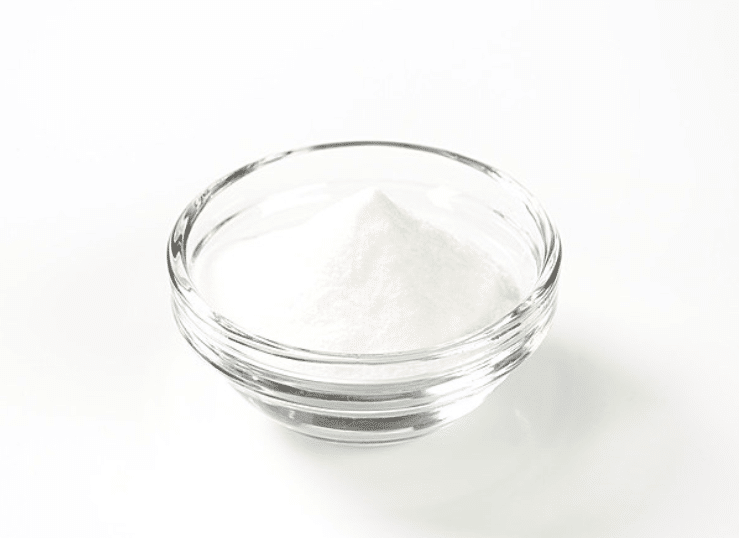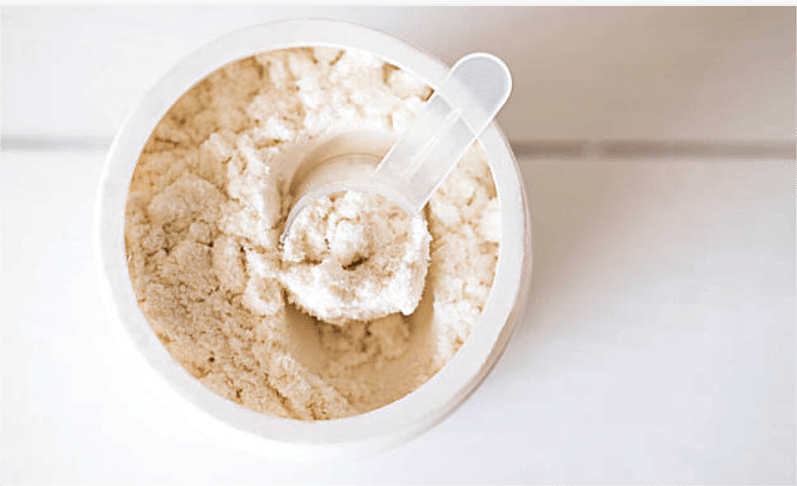Comparing Collagen and Glucosamine: A B2B Perspective for Sourcing Decisions
In the booming market of dietary supplements, the demand for effective joint health ingredients is on the rise. Among the front runners are collagen and glucosamine, both of which have earned their place in the limelight for their potential benefits in promoting joint health, flexibility, and pain relief. As a B2B professional, understanding the differences, advantages, and applications of these two ingredients is essential for making informed sourcing decisions. This article aims to provide a thorough comparison of collagen vs. glucosamine, evaluating their efficacy, safety, production methods, and market potential.
Basic Information Overview
- Aliases: Collagen protein, hydrolyzed collagen.
- Latin Name: Collagen is derived from various animal tissues; no specific Latin name applies.
- CAS Number: 9064-67-9.
- Production Standards: Adheres to standards set by the United States Pharmacopeia (USP) and the European Pharmacopoeia.
- Appearance: Typically a fine, white to light yellow powder.
- Taste: Generally neutral or slightly sweet.
- Production Solvents: Primarily water and acids used during hydrolysis.
- Common Specifications: Contains around 90-95% protein with varying molecular weights.
- HS Code: 3503.00 (gelatin and other proteins).
- Shelf Life: Approximately 2-3 years when stored in a cool, dry environment.
- Storage Conditions: Requires airtight, moisture-proof packaging.
- Packaging Sizes: Available in 1 kg, 5 kg, and bulk sizes.
- Aliases: Glucosamine sulfate, glucosamine hydrochloride.
- Latin Name: Derived from shellfish or produced synthetically; no specific Latin name.
- CAS Number: 38899-05-7 (for glucosamine sulfate).
- Production Standards: Follows Good Manufacturing Practices (GMP).
- Appearance: White crystalline powder.
- Taste: Slightly bitter, with a saline note.
- Production Solvents: Primarily relies on water for crystallization.
- Common Specifications: Typically contains over 98% glucosamine.
- HS Code: 2932.90 (alkaloids, natural or synthetic).
- Shelf Life: Usually lasts around 3 years.
- Storage Conditions: Store in a cool, dry place, away from direct sunlight.
- Packaging Sizes: Commonly found in 1 kg, 5 kg, and larger volumes.
Historical Background
Collagen The use of collagen in supplements dates back several decades, primarily focused on its role in skin health and elasticity. However, its application in joint health has gained significant traction in recent years, driven by research highlighting its role in cartilage repair and maintenance.
Glucosamine Glucosamine became popular in the dietary supplement market in the late 20th century as studies began to reveal its potential for relieving arthritis symptoms. Initially derived from shellfish, glucosamine is often included in joint health formulations alongside other ingredients like chondroitin.
Common Forms in the Market
Both collagen and glucosamine primarily appear in powder form, perfect for inclusion in dietary supplements like tablets, capsules, and functional foods. Collagen is also present in liquid formulations, while glucosamine can sometimes be found in combination formulas with other joint-supporting nutrients.
Auxiliary Ingredients Used in Production
- Collagen: Auxiliaries can include stabilizers and flavoring agents, ensuring product quality and appealing taste for end-users.
- Glucosamine: Typically involves anti-caking agents during processing to prevent clumping in powder form.
Solubility Characteristics
Collagen: While collagen can be mixed into beverages or food items due to its water solubility, it can also be heat-sensitive, requiring careful handling in preparation.
Glucosamine: Primarily soluble in water, making it easy to incorporate into various formulations, including drinks and instant powders.
Applications in the Market
Collagen:
- Joint Health: Supports cartilage regeneration and joint flexibility.
- Skin Care: Used widely in beauty products for skin hydration and elasticity.
- Bone Health: Emerging research indicates potential benefits in bone density.
Glucosamine:
- Osteoarthritis Management: Frequently recommended for reducing pain and inflammation in joint conditions.
- Sports Supplements: Gaining popularity among athletes for recovery and joint support.
Key Production Processes
- Collagen:
- Extraction: Sourced mainly from animal collagen such as bovine or fish.
- Hydrolysis: Enzymatic hydrolysis is employed to break down collagen into smaller peptides for improved absorption.
- Glucosamine:
- Source Selection: Extracted from shellfish or synthesized from glucose.
- Purification: The glucosamine compound is purified to ensure high-quality standards.
These production methods impact cost, quality, and marketability, and understanding these differences will aid in sourcing decisions.
Health Benefits and Effects
Collagen:
- Supports cartilage health and joint flexibility.
- Promotes skin hydration and elasticity.
- May assist in reducing joint pain associated with aging.
Glucosamine:
- Provides relief from osteoarthritis symptoms and improves joint mobility.
- Helps in the rebuilding of cartilage.
- May reduce inflammation, contributing to overall joint health.
Potential Side Effects
Collagen:
- Generally safe with minimal reported side effects, though some individuals may experience gastrointestinal discomfort.
Glucosamine:
- May cause digestive issues in some users, particularly at higher doses.
How They Work in the Body
- Collagen works by providing amino acids essential for the repair and regeneration of cartilage and connective tissues.
- Glucosamine functions by serving as a building block for cartilage, facilitating its repair and potentially reducing pain associated with joint wear and tear.
Detection Methods for Quality Assurance
Both ingredients undergo rigorous quality testing:
- Collagen: Quality can be assessed using chromatographic techniques to verify protein content and purity.
- Glucosamine: Purity is typically evaluated through HPLC methods, ensuring minimal impurities.
Common Formulations Available
- Collagen Formulations: Usually combined with other joint health ingredients, such as hyaluronic acid or glucosamine.
- Glucosamine Formulations: Often found in combination with chondroitin or turmeric for enhanced joint support.
Recommended Dosages
Typical dosage recommendations include:
- Collagen: 10–20 grams per day for optimal joint and skin benefits.
- Glucosamine: 1500 mg to 2000 mg per day as a standard dose for joint health.
Time to See Results
- Collagen: Users may notice improvements in skin and joint health within 4-6 weeks of consistent use.
- Glucosamine: Relief from arthritis symptoms generally occurs within a few weeks of regular supplementation.
Mechanism of Action in Detail
- Collagen supplies the amino acids that are crucial for synthesizing new collagen fibers in connective tissue, promoting overall joint and skin health.
- Glucosamine stimulates cartilage repair and may help maintain the integrity of joints, preventing further degeneration.
Comparable Products
Potential alternatives for joint health include:
- Hyaluronic Acid: Supports joint fluid and lubrication, often used in conjunction with glucosamine.
- MSM (Methylsulfonylmethane): Known for its anti-inflammatory benefits, commonly used alongside glucosamine.
Recent Clinical Research Developments
- Recent studies have shown that collagen supplementation can significantly improve symptoms in individuals with joint pain, highlighting its effectiveness in promoting overall joint health.
- Glucosamine continues to be evaluated in clinical trials, with evidence supporting its efficacy in managing osteoarthritis symptoms and slowing degenerative processes in joints.
Regulatory Landscape
Regulations for both ingredients vary by country:
- Collagen: In the U.S., collagen is classified as a dietary supplement and must comply with safety and labeling regulations.
- Glucosamine: Similarly regulated as a supplement, it is scrutinized under laws regarding dietary ingredient safety.
Market Outlook
The market for both collagen and glucosamine is expanding rapidly, influenced by growing awareness of preventive health care:
- Market Trends: The global collagen market is projected to grow significantly, driven by both the beauty and health sectors.
- Glucosamine is also seeing increased demand, particularly in supplements for aging populations focusing on joint health.
Key Advantages and Disadvantages
| Collagen | Glucosamine |
|---|---|
| Advantages | |
| Promotes joint and skin health | Directly supports cartilage repair |
| Versatile applications | Effective for osteoarthritis |
| High consumer demand | Natural and well-researched |
| Contains vital amino acids | Widely accepted and used |
| Safe with minimal side effects | Can be effective quickly |
| Disadvantages | |
| Source-dependent (animal-derived) | Shellfish allergies can pose issues |
| May require longer duration before effects are seen | Possible digestive side effects |
| Effectiveness can vary | Dosage varies widely |
| Higher cost compared to generic alternatives | Tastes may not appeal to everyone |
Tips for Choosing Suppliers
When scouting for suppliers of collagen and glucosamine, keep these points in mind:
- Certification and Quality Control: Ensure suppliers have necessary certifications like ISO and GMP.
- Transparency in Sourcing: Inquire about sources and production processes.
- Reliability and Customer Service: Choose suppliers with a strong track record of fulfilling orders and providing support.
Conclusion
In conclusion, collagen and glucosamine both hold significant potential for improving joint health and overall well-being. Each ingredient has its unique benefits and applications, making it essential for businesses to evaluate these factors in light of their specific market needs.
If you’re interested in sourcing reliable collagen or glucosamine products, please contact us at sales@collagensei.com. At Gensei Global Industries, we are an FDA-certified manufacturer with ISO, HALAL, KOSHER, and MSC certifications. Our extensive product range and logistics capabilities ensure that we meet your sourcing needs efficiently.
Navigating the complexities of ingredient sourcing can be daunting, but with our expertise, your business can thrive in a competitive market while delivering products that meet consumer expectations for health and quality.




